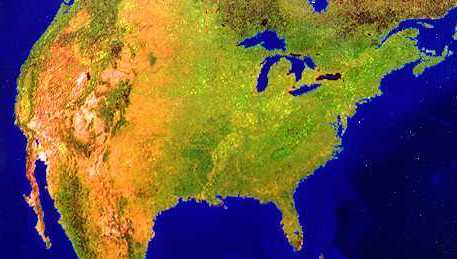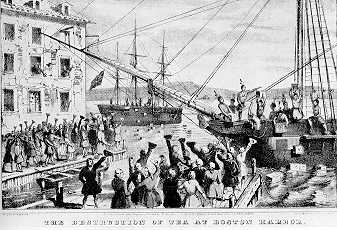
CHINA
![]() GOTHENBURG
GOTHENBURG
GOTHENBURG | THE NORTH SEA | CADIZ | CAPE TOWN | ROARING 40's | BENGALA | BATAVIA | CANTON | CHINA

Chinese porcelain first came to North America in the late sixteenth century. It arrived on Spanish galleons, then Dutch, British and French and finally on American East Indiamen.
By the end of the 18th century the now independent States of North America appeared on the East India market with ships of their own.
Having been founded by the Dutch both Djakarta (Batavia), New York (New Amsterdam) and Gothenburg, Sweden all shows great similarities in their city plans still visibly today.
La Salle Shipwreck Project The Baltimore Clippers.
The first ships that were ever built with speed instead of carrying capacity as the chief desideratum were the long, low, flush-decked Baltimore brigs and schooners, which by reason of their unusual sailing powers became celebrated the world over under the name of the "Baltimore Clippers".
These vessels dated from as far back as the American War of Independence, many of them were privateers, still more of them were slavers, whilst not a few ranged the Indies with the dreaded skull and crossbones flying from their signal halliards. These Yankee free-lances were wonderfully speedy in light airs and in turning to windward; and, carrying as they did large desperate crews and heavy armaments, often proved themselves more than a match for the tubby, overmasted sloops and brigs of the British Navy.
The Baltimore type had several very striking peculiarities which, in the eyes of a stranger, gave immediate cause for anxiety and alarm, for any vessel described by the lookout as a" rakish looking craft" was at once suspected of being an ocean free-lance.
Other characteristics of the Baltimore clipper were long, easy water lines, with nothing concave about them like those of the later American clippers, great dead rise at the midship section, and an unusual number of flying kites in addition to her working sails, which were, of course, like all American sails of gleaming cotton duck.
For some time the word clipper was only applied to Baltimore ships, but gradually as fast ships began to be built in other ports for trades in which speed was of great importance, these also were called clippers, though none of these later clippers in the least resembled the Baltimore schooners, with the exception perhaps of some of the American opium clippers, which certainly did show many of the characteristics of the Baltimore model.
From early in the nineteenth century to the late seventies three distinct types of fast sailing ships or clippers were employed in the China trade. These were the opium clippers, the American tea clippers and the British tea clippers. The first dated from about 1830 to 1850, the second from 1846 to 1860, and the last from 1850 to 1875.
From the very start the importation of opium into China was entirely against the decrees and wishes of its rulers, who knew only to well the harm done by the drug to all who fell under its influence. Those enterprising British, American and Parsee firms who engaged in the opium traffic were nothing more nor less than smugglers. Smugglers indeed who showed greater daring and finer seamanship and made bigger profits than any the world had previously known.
(From, B. Lubbock, The China Clippers, Glasgow 1919)
Shining Sea Foundation Peabody Essex Museum SouthWestern Archaeology
TOP OF PAGE
Welcome to NYC LINK
CHINA
USA
A current effort by the Texas Historical Commission to excavate, preserve, and analyze the remains of the 1686 wreck of the French explorer La Salle's Vessel "Belle." The site offers a unique look into an active nautical archaeology project.Baltimore

Boston
The project to build a new American clipper, the Shining Sea.
Salem
The Peabody Essex Museum's roots can be traced to 1799, when Salem was America's largest and richest seaport. They created two remarkable museums: the Peabody Museum of Salem, founded in 1799 as the East India Marine Society, dedicated to the exploration of the art and natural wonders of other cultures, and the Essex Institute, founded in 1821.Los Angeles
This is the "Type Site" for World Wide Web Archaeology as practiced in the American Southwest. It encompasses the area from Durango Colorado to Durango Mexico, and from Las Vegas Nevada to Las Vegas New Mexico. The boundaries of the type site are a bit unclear as Southwestern Archaeology also includes vast expanses of intellect and tradition, and matters of the heart...New York
The Official New York City World Wide Web Site.San Francisco
Washington
The Smithsonian Institution
was established in 1846 with funds bequeathed to the United States by James Smithson, an English scientist. The Smithsonian is an independent trust instrumentality of the United States holding some 140 million artifacts and specimens in its trust for "the increase and diffusion of knowledge." The Institution is also a center for research dedicated to public education, national service, and scholarship in the arts, sciences, and history.
![]() GOTHENBURG
GOTHENBURG
The satellite photo courtesy of SSC Satellitbild, NOOA-11 GAC Image ©SSC Satellitbild 1993, Kiruna, Sweden.
Web page © Jan-Erik Nilsson, 1998